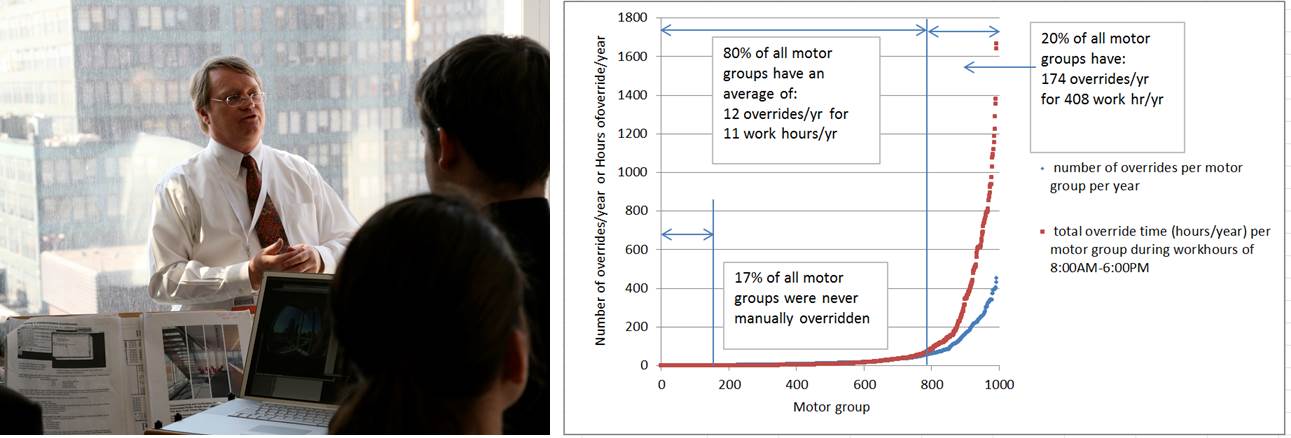Occupant Behavior
Market adoption of automated façade systems is critically dependent on how well occupants accept the systems and whether they are satisfied and comfortable with the resultant indoor environment. End-user acceptance is in part dependent on the properties of the device, such as: how quickly the system responds to conditions of discomfort, how well it can mitigate sources of discomfort, and the quality of the indoor environment when the system is deployed. Acceptance is also critically dependent on how the system is actuated: if inadequate, the system will be disabled, and the anticipated benefits will not be obtained. LBNL has conducted research to better understand end-user behavior and its impact on projected energy performance.

Left: Glenn Hughes, Director of Construction, The New York Times Company, ensured that all systems were commissioned prior to occupancy of their new headquarters building. Right: The result was very high occupant satisfaction with the resultant indoor environment. Post-occupancy data five years after occupancy showed that 80% of all automated motorized shades were manually overridden no more than 12 times per year for an average of 11 hours per year.



